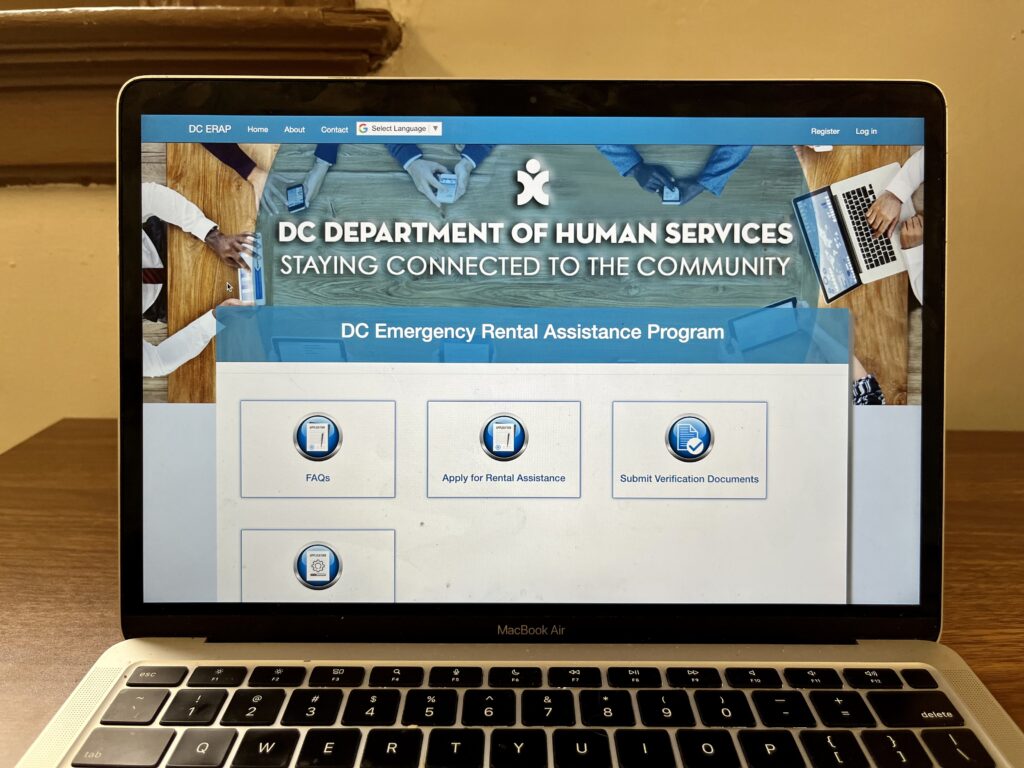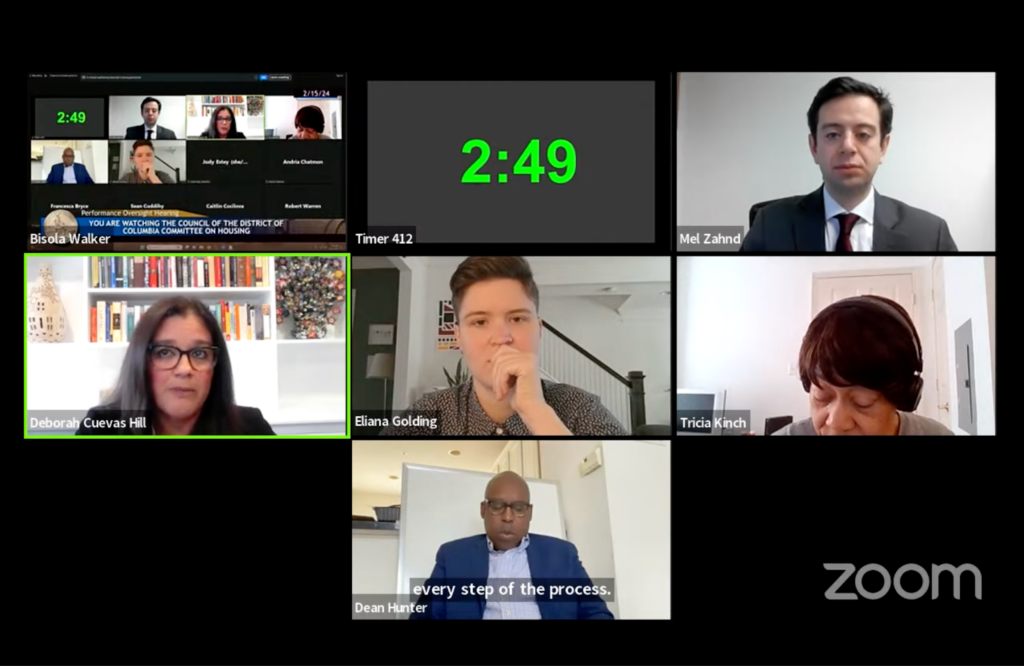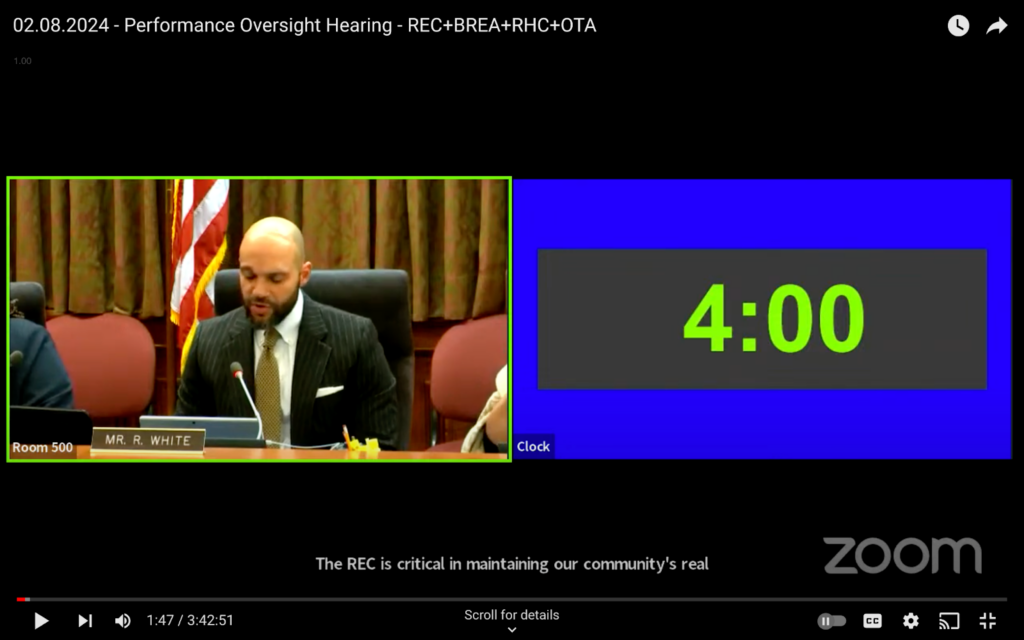Contrary to earlier expectations, D.C.’s Emergency Rental Assistance Program (ERAP) won’t reopen for new applications this year even after an infusion of $33 million in new federal funding announced in the spring.
Instead, about half of the funds will be used to support existing applicants to ERAP, and the rest for Rapid Rehousing (RRH). The D.C. Council allocated the entire $33 million for ERAP, but the Department of Human Services (DHS), which oversees both programs, announced in a meeting earlier this month it would be splitting the money. The council’s budget office and others say this is counter to the council’s directive to spend the full $33 million on ERAP, and DHS may need council approval to spend part of the money elsewhere.
“The Council added $33.5 million for emergency rental assistance this fiscal year after the Emergency Rental Assistance Program (ERAP) ran out of funds in May to give a lifeline for people facing eviction,” At-large Councilmember Robert White, who oversees DHS as chair of the Housing Committee, wrote in a statement. “If DHS would like to spend the funding the Council allocated for ERAP in a different way, they will need to either use contingency funds or submit a detailed reprogramming request for the Council’s review.”
Applications for ERAP, which provides up to five months of rental assistance to low-income people at risk of eviction, surged between October 2022 and March 2023 — the first six months of the fiscal year. DHS officials reported receiving 4,500 applications. At the time, the agency said the influx meant there was only enough left in ERAP’s $43 million budget to process applications the program had already received. DHS closed applications in March.
Advocates like the Fair Budget Coalition have long argued ERAP is underfunded, noting that every year the program runs out of funds months early. Throughout the pandemic, local eviction and housing attorneys argued that continued rental assistance was essential in keeping people in their homes.
When Mayor Muriel Bowser announced the federal government was sending D.C. an additional $33 million for rental assistance, left over from states that failed to use all their pandemic funding, many councilmembers hoped they’d found a way to reopen ERAP applications.
The council allocated the $33 million to ERAP during this year’s budget process, approving a revised budget for fiscal year 2023 on May 30. Both White and Council Budget Director Jen Budoff confirmed the council voted to put all $33 million toward ERAP for use as soon as DHS received the money. Some council offices only learned of DHS’s decision to split the money when Street Sense Media and The DC Line reached out for comment.
According to DHS’s current plan, about $15.5 million will be used to provide rental assistance to people who applied for ERAP before the program closed to new recipients in March. The rest of the $33.5 million will be used for RRH, a transitional housing program for people experiencing homelessness. While ERAP is widely seen as effective, some advocates and participants have said RRH doesn’t meet its goal of helping people find permanent housing.
The decision to split the funds was based on spending needs for the current year, according to DHS, which wrote in a statement that “[emergency rental assistance] funds are allocated for the rental assistance and housing stabilization services,” which includes RRH.
The agency has already allocated $6.7 million of the total for ERAP, with $8.7 million in “potential additional funds,” according to slides from DHS shared with Street Sense Media and The DC Line.
Because the council intended to set aside the entire $33 million for ERAP, White said that Bowser would need to submit a reprogramming request for the council to review and consider if DHS wants to spend some of the money on RRH.
While both ERAP and RRH fund homeless services and prevention, advocates for people experiencing housing instability generally put more faith in the preventive nature of ERAP — a key reason so many have called to increase funding for the program over the last few years. Some advocates and providers, meanwhile, question the efficacy of RRH, which is distributed after eviction or homelessness and which can leave people without options once the time-limited subsidy ends.
The mayor and council have been split over how to manage ERAP, with the mayor backing reductions to the program’s pre-pandemic funding levels. Bowser’s initial spending plan for fiscal year 2024 proposed reducing the ERAP budget to just $8 million, a move decried by advocates who predicted applications would close in under a month with that amount of funding. The council voted to restore the money to the current year’s level — $43 million.
This article was co-published with The DC Line.
Annemarie Cuccia covers D.C. government and public affairs through a partnership between Street Sense Media and The DC Line. This joint position was made possible by The Nash Foundation and individual contributors.








